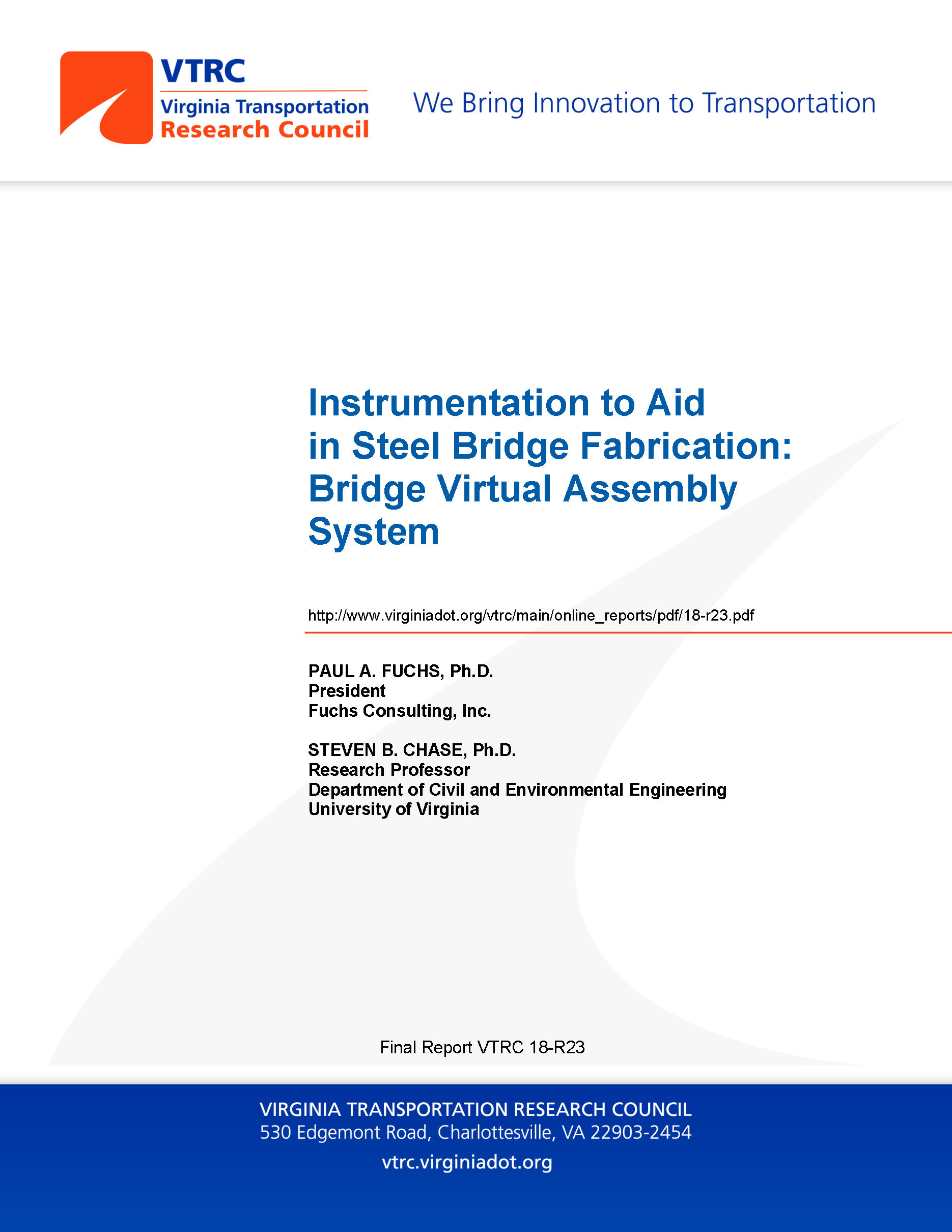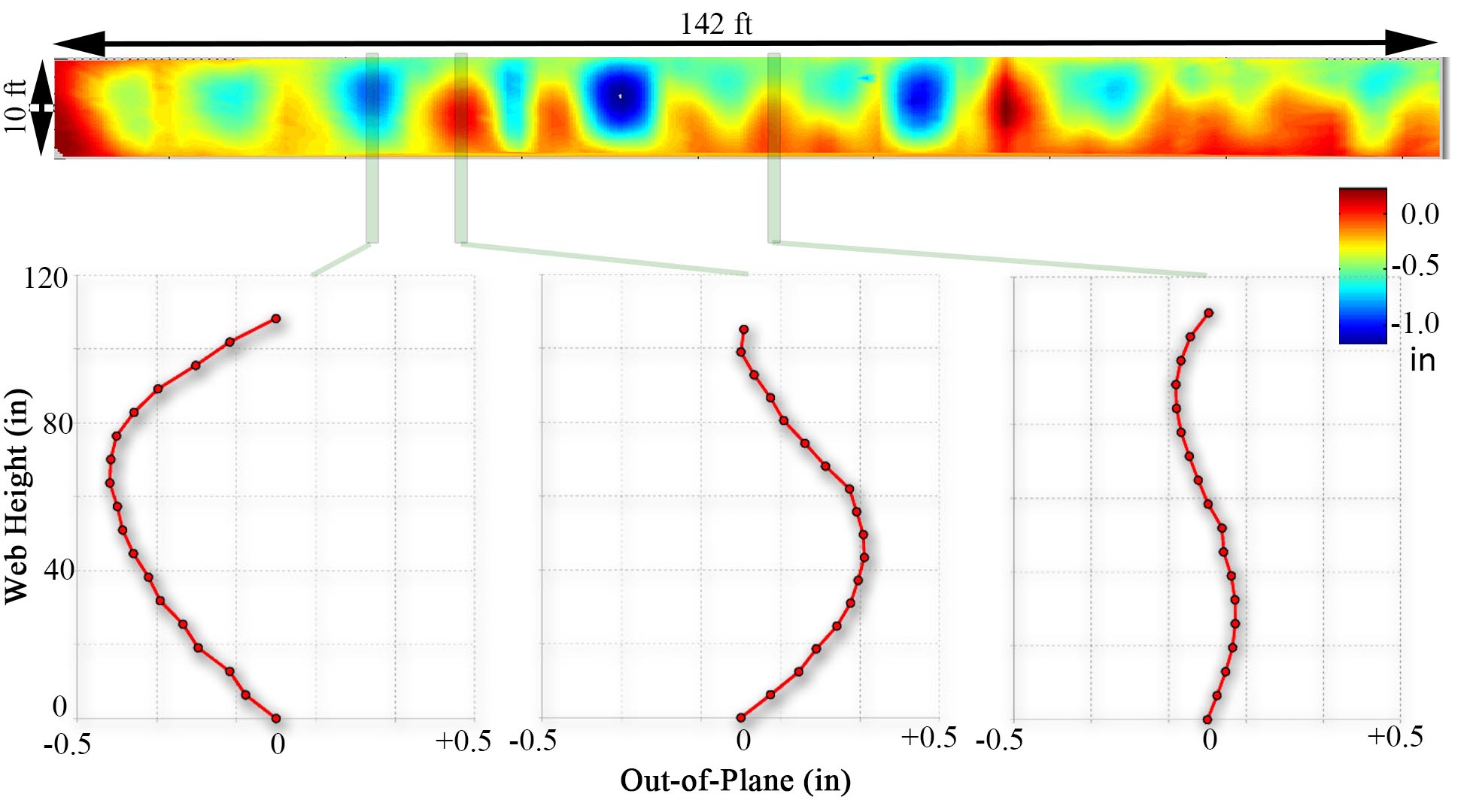Transportation Pooled Fund Project TPF-5(226) was led by the Virginia
Department of Transportation. Other project members included New York,
Iowa, Texas, and the Federal Highway Administration.
| |
| |
|
Steel bridge fabrication procedures strive to deliver a bridge that fits
together as-designed during erection. To minimize fit-up issues during
erection, most fabricators employ a match-drilling process. Using this
method, girder holes are drilled to fit with a standard pre-fabricated splice
plate in order to ensure proper alignment. This method of fabrication is,
however, labor and space intensive. Typically, holes can’t be machined into
steel plates in the most efficient manner. Holes are now drilled in a fully
fabricated girder with the web attached to the flanges, as opposed to placing
holes in flat plates using more efficient drilling equipment. In spite of
using current match-drilling procedures to guarantee alignment, there are
still fit-up issues during erection. The goal of this project was to develop
new tools and methods that improve current manufacturing processes and quality
control (QC) during fabrication. These tools and methods provide much greater
and more accurate information than current practices that rely on manual
measurements. This project has developed and deployed a
BRIDGE VIRTUAL ASSEMBLY SYSTEM (BRIDGE VAS) that improves current steel
bridge fabrication processes. More reliable and more accurate information
on what is being fabricated will produce a better quality end-product,
benefiting both fabricators and bridge owners. The BRIDGE VAS eliminates
the need to match-drill girders and has the potential to reduce fit-up issues
during erection.
|   |
 |
Fuchs Consulting, Inc. has developed a BRIDGE VIRTUAL ASSEMBLY SYSTEM (BRIDGE VAS)
that improves manufacturing processes and enhances quality control for steel
bridge fabrication. The system replaces conventional match-drilling with
virtual assembly methods, creating custom-designed splice plates. Vastly
improved measurement and documentation of fabricated girders is possible with
the system. This project report describes these improved measurements in
detail and compares them to conventional measurement methods, including a
detailed analysis of the accuracy limitations of current methods. An
assessment of current fabrication processes was conducted and is presented.
Based on this assessment, the measurement system was designed and tested; the
design features and a system description are provided within this report. The
system was deployed on a production bridge job, representing the first time
entire lines of girders have been measured with such precision and accuracy
and the first time virtual assembly has ever been demonstrated.
|
 | |